Which of the following sentences truly describes Bali?
Bali: A peaceful, spiritual island paradise filled with picturesque lush rice terraces, beautiful beaches, and a deep history and culture.
OR
Bali: An island destination designed for tourists to buy overpriced goods, get a tattoo, fight unbearable traffic, take pretty Instagram photos, zipline across the rice terrace theme parks, and take a Western-style yoga class or two to get in touch with their spiritual side?
Deep down, we really want to believe the former is more true that the latter. However, we struggled greatly during our recent two weeks in Bali to believe that a rich culture still exists. We originally visited the island back in 2010 and felt the current vibe to be much different.
Don’t get me wrong. We really do believe there are still glimmers of hope for this over-visited destination, but it will take some work. We break down the positives and negatives of our recent visit to Bali.
Please note that these are our opinions only, and your own experience may be different. We realize that we have only been to a few areas on the island of Bali (Uluwatu, Nusa Dua, Kuta, Seminyak, Ubud, Mt. Batur), and have heard wonderful things about Amed, Nusa Lembongan, and the Gili islands, which we have not had the opportunity to visit.
Related Posts:
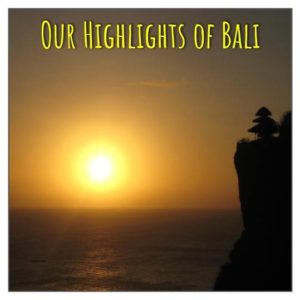 |
 |
 |
The Positives
The weather and environment is fantastic
Our recent trip to Bali landed in rainy season (October-April), but we wouldn’t have known unless we’d read about it! We experienced a few sporadic showers here and there, but sunshine dominated the forecast. Temperatures averaged in the high 20s Celsius, and never felt unbearable. The island’s natural environment is diverse, with volcanos, rainforests, rice terraces, and beaches.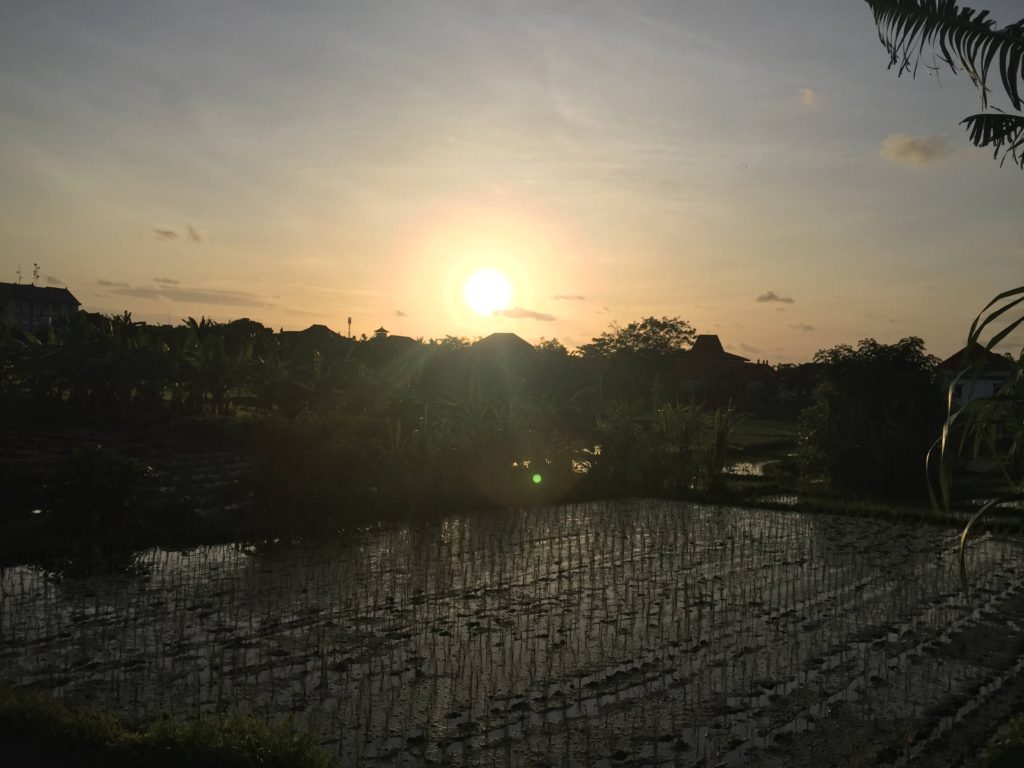
It is easy to communicate
For English speakers, it is unlikely to have translation problems in Bali. Most people in the tourism industry have a good grasp of the English language.
Food is delicious and reasonably priced
We really enjoy Balinese food! The mix of fragrant spices combined with vegetables, meat or fish and rice creates a perfect balance! Portion sizes at restaurants are always generous and prices are quite low (by Canadian standards). We even enrolled in a cooking class to take some knowledge back home!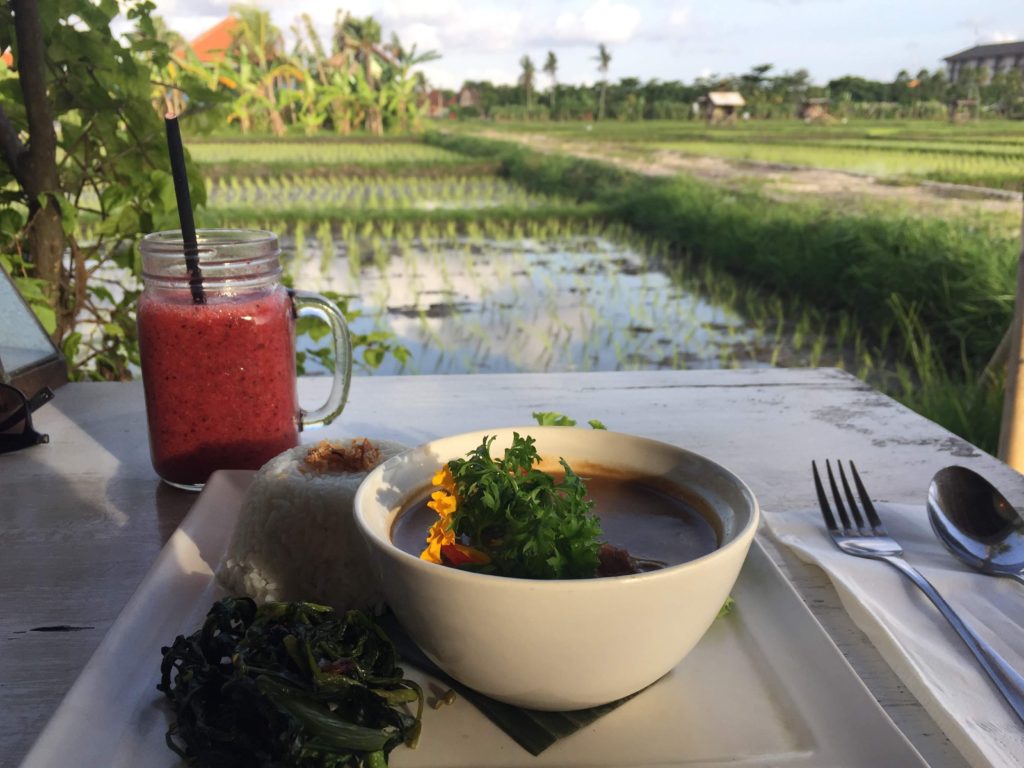
The people are extremely friendly
The locals we interacted with on a daily basis were among the friendliest we’ve met in our travels. The expression, ‘service with a smile’ is perhaps more relevant in Bali than anywhere we’ve been in recent memory.
The Negatives
The touts are relentless
It was impossible to walk anywhere in Seminyak and Ubud without being hounded by touts. We felt as though something was wrong if we successfully walked for 30 seconds without being asked if we wanted a taxi, a scooter, a massage, or to visit a restaurant or shop (most of which sold tacky tourist items and counterfeit goods at inflated prices). 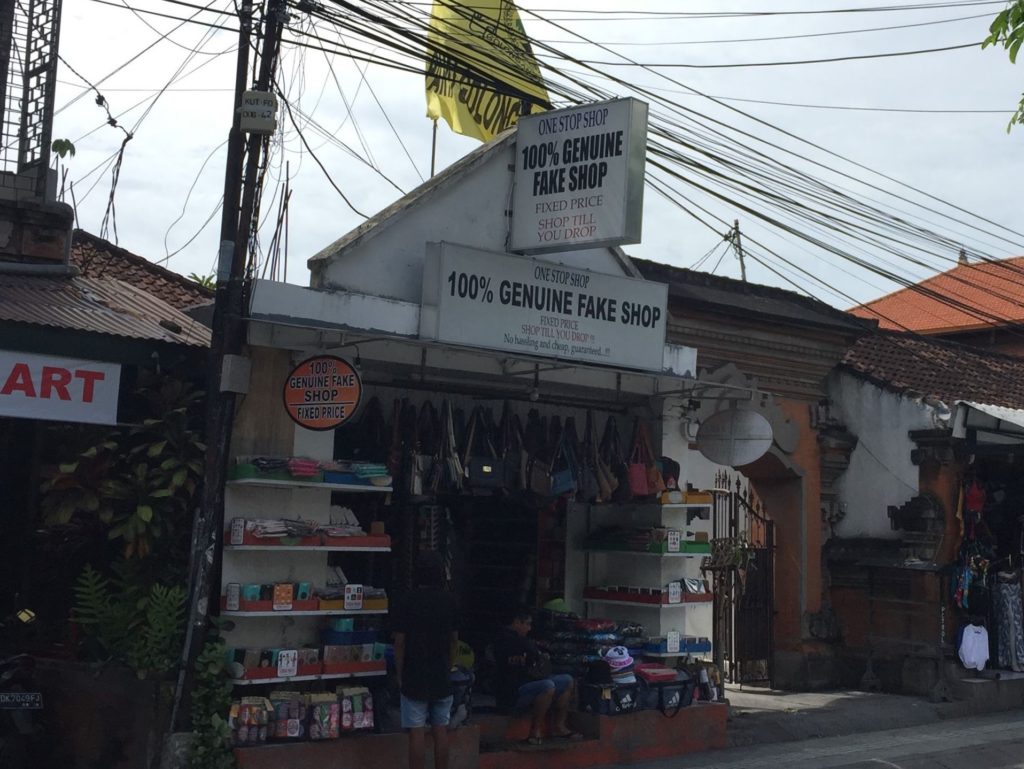 At one point, I was even offered Viagra while walking down the street! At times, it appeared that Bali had more taxi drivers than tourists! Everywhere we walked (especially in Seminyak), taxis slowed down and honked at us. In all fairness though, we were usually some of the only tourists walking around. I suppose everybody else must have been in a taxi or having a massage!
At one point, I was even offered Viagra while walking down the street! At times, it appeared that Bali had more taxi drivers than tourists! Everywhere we walked (especially in Seminyak), taxis slowed down and honked at us. In all fairness though, we were usually some of the only tourists walking around. I suppose everybody else must have been in a taxi or having a massage!
There is only one reputable taxi company southern Bali (and many imposters)
In the southern part of Bali, there is only one reputable taxi company called Blue Bird Taxi Bali. They have made a name for themselves as an honest company that do not gouge tourists with overpriced fares or scams. With that said, most of the other taxis in southern Bali are all Blue Bird imposters.
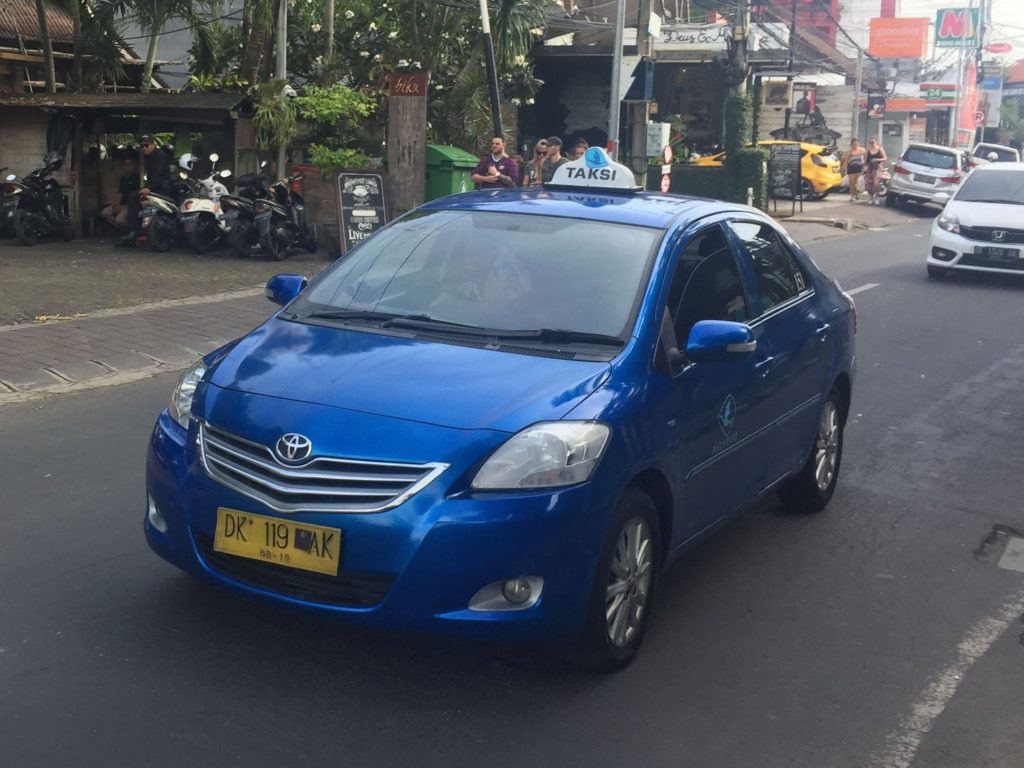
You have to have a keen eye to ensure you are using the real Blue Bird and not one of the fraudsters. Check out our post “Bali’s Taxi Scene: From Copycats to the Taxi Mafia” for more information on how to tell the difference between the real company and its imposters.
The ‘taxi mafia’ is ruining it for everyone
Ride sharing apps, such as Uber or Grab are quite a contentious topic in Bali. Their fares are only a fraction of the cost of what tourists are quoted by the taxi guys on the street. Therefore, many tourists opt to use ride-sharing apps. This has angered regular taxi drivers, as they feel this is unfair and are unable to compete with these lower prices. This has led local drivers to create a ‘taxi mafia’. They have erected signs to warn tourists not to use ride-sharing apps and there have been many reports of the taxi mafia becoming aggressive towards ride-sharing drivers and passengers. 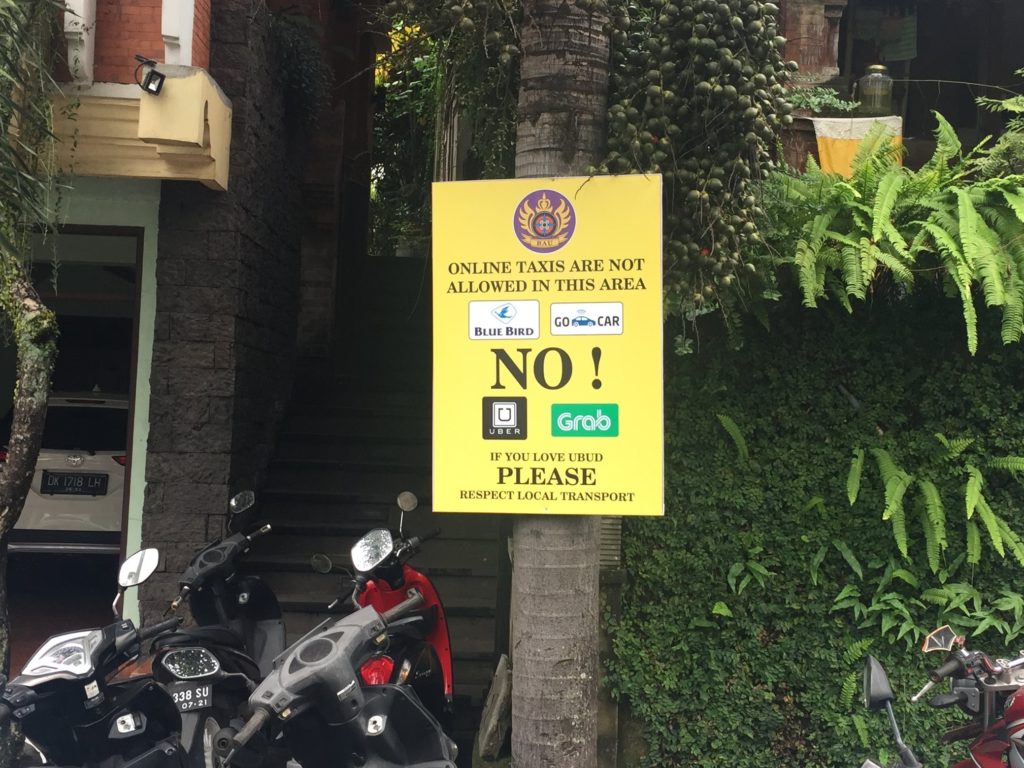 The problem is, most tourists want a fair price and do not want to or know how to haggle for the appropriate fare. It also makes it difficult for tourists who do not speak English to get a fair price.
The problem is, most tourists want a fair price and do not want to or know how to haggle for the appropriate fare. It also makes it difficult for tourists who do not speak English to get a fair price.
With that said, there are two sides to the taxi mafia story. For more information on this, check our post “Bali’s Taxi Scene: From Copycats to the Taxi Mafia”.
Majority of money exchange counters are fraudulent
There are “authorized money changer” counters all over Bali. These are usually the ones offering better rates than the banks or official money changers. However, the problem is that many of them are unscrupulous con artists. They are known to intentionally provide the wrong amount of money, use doctored calculators that show the wrong price or use sleight of hand tricks to rip tourists off.
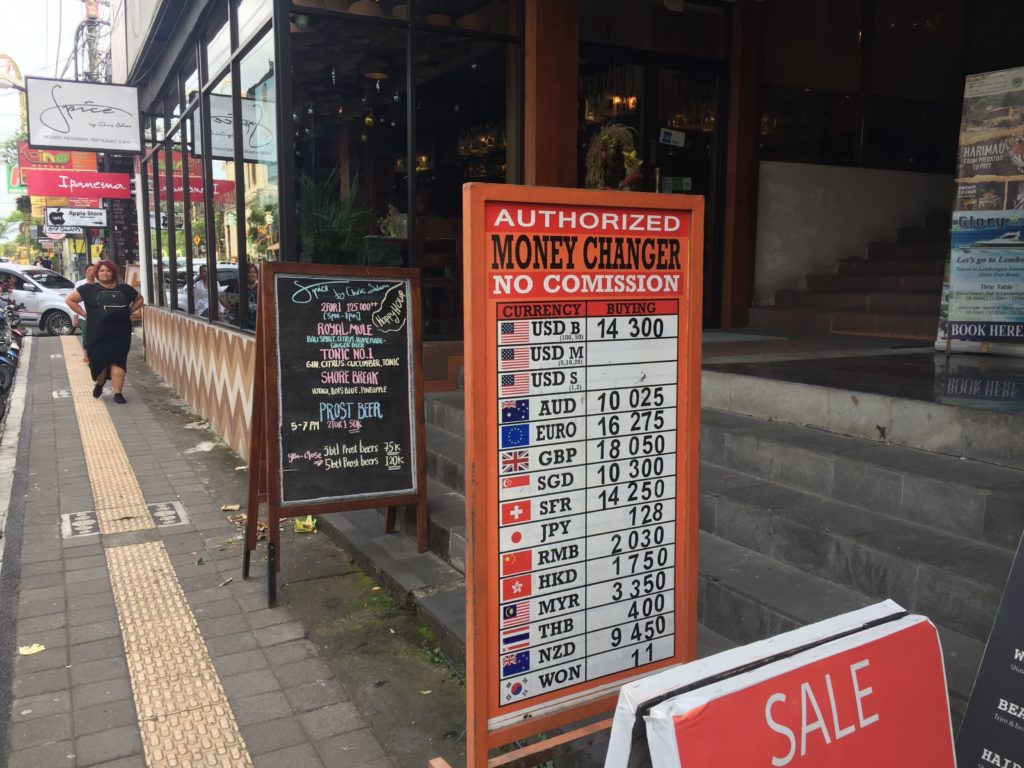
To avoid this, tourists should use an authentic money changer such as:
PT. Dirgahayu Valuta Prima
Bali Maspintjinra (BMC Money Changer)
PT. Central Kuta
PT. Made Putroe Bakrie (MPB Money Changer)
RARA Money Changer (RMC)
Tip: You can exchange money in the airport, however, you will get a far lower rate than in town. I recommend to exchange a small amount of money at the airport to start.
There is garbage everywhere
There seems to be garbage on the ground everywhere you go in Bali. The public beaches, sidewalks, and markets are littered with debris. It is not surprising to know that Indonesia ranks among the world’s biggest mismanagers of plastic waste. 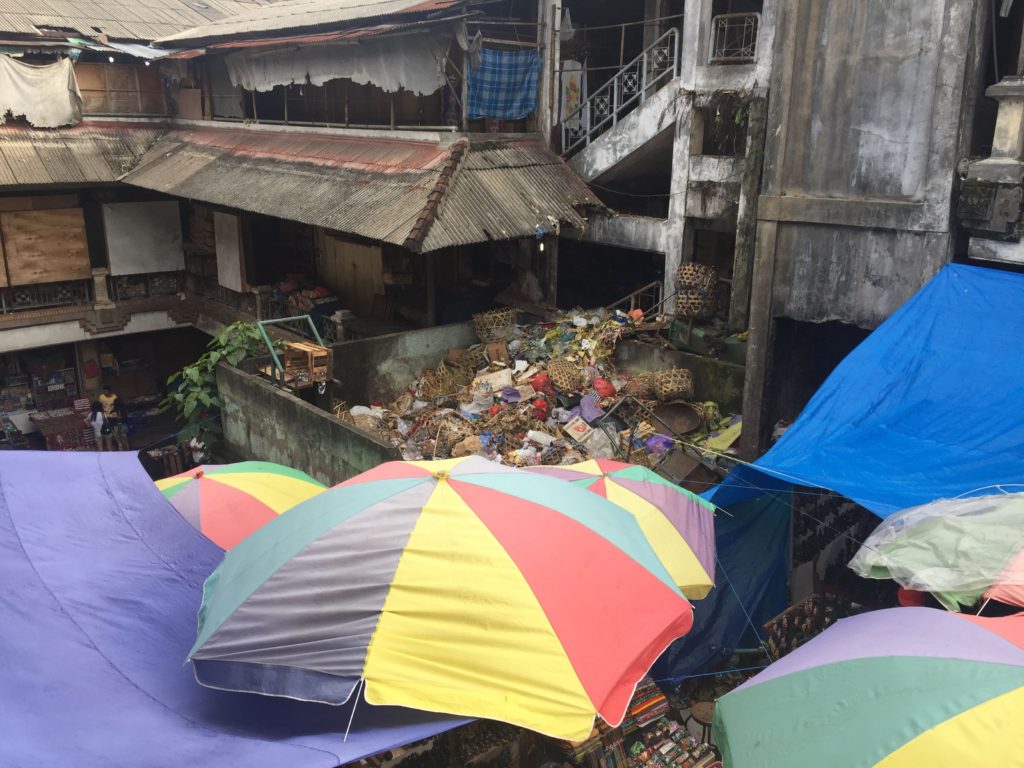 On a positive note, we did notice a conscious effort by local establishments to reduce the amount of plastic waste. For example, most restaurants provide paper or bamboo straws instead of plastic ones. We also saw good samaritans spending a day at the beach picking up garbage instead of sunbathing. Every bit helps!
On a positive note, we did notice a conscious effort by local establishments to reduce the amount of plastic waste. For example, most restaurants provide paper or bamboo straws instead of plastic ones. We also saw good samaritans spending a day at the beach picking up garbage instead of sunbathing. Every bit helps!
Prices for goods are massively inflated
Food and accommodations excluded, deals for souvenirs, clothing, and other items in Bali are virtually non-existent. Cheaply made items in the market were being offered at exorbitant prices. I understand that haggling is part of the fun, but the quoted prices by merchants were bordering on ridiculous! At one point, we overheard the quoted price of an identical handbag change from $450,000 IDR to $100,000 IDR from one stall to the next. That is a difference of over $30 Canadian!
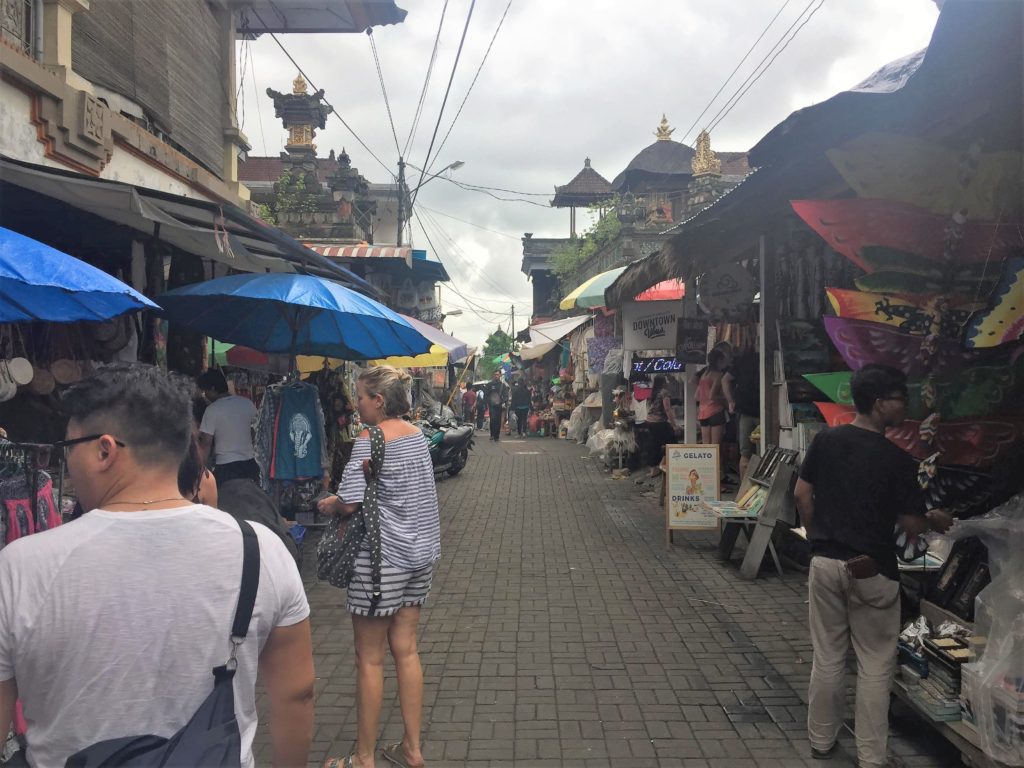
Another example is a small wooden monkey ornament that we bought for our Christmas tree, for which we paid $10,000 IDR. This same item was quoted to us at a different stall for $100,000 IDR, That’s 10 times the price!
There are also many regular shops that are not in markets and display their prices. These prices are essentially the same (or more) than we would pay for the same goods in Canada.
It feels like a theme park
The town of Ubud is known as the cultural heart of Bali. The streets are lined with beautiful Hindu temples, shops selling crafts and wood carvings, and not far out of the town are gorgeous rice terraces. With that being said, the commodification of this area made it feel like we were walking through a theme park every time we strolled through the centre of town.
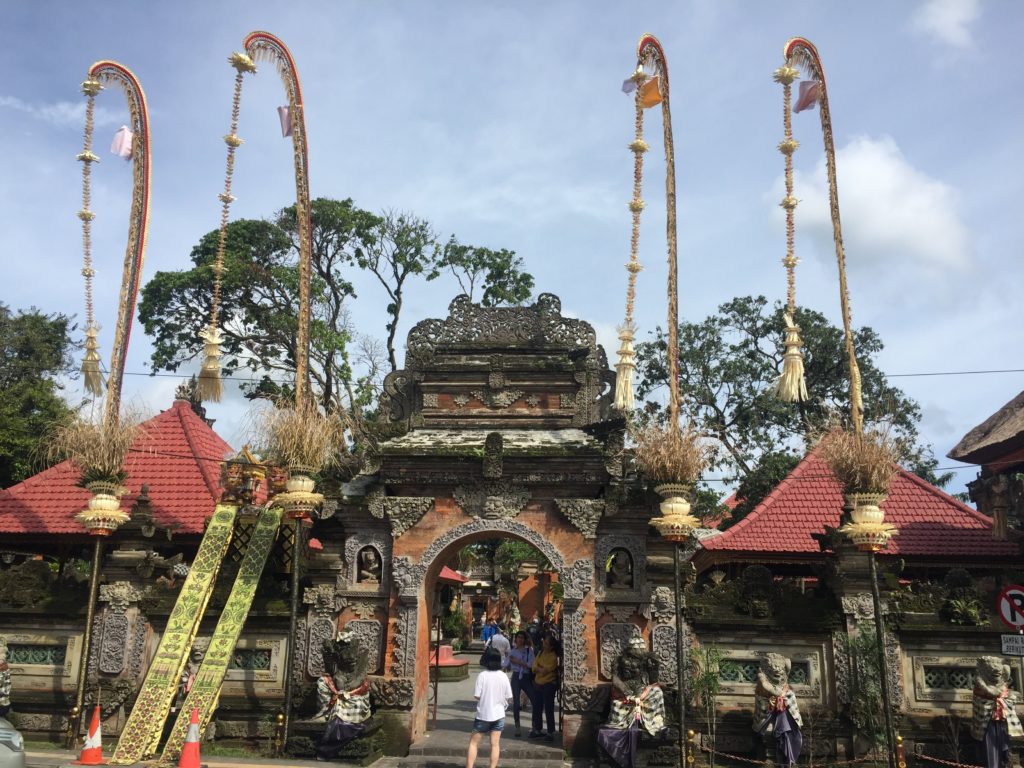
We were constantly bombarded by touts offering taxis, tours, tickets to traditional dance shows, a seat in their restaurant, or a massage. This was alongside the excessive horn honking of the fully packed roadways. Ubud certainly did not live up to its reputation of being a peaceful, quiet escape from the rowdier beach areas of Bali, such as Kuta and Seminyak.
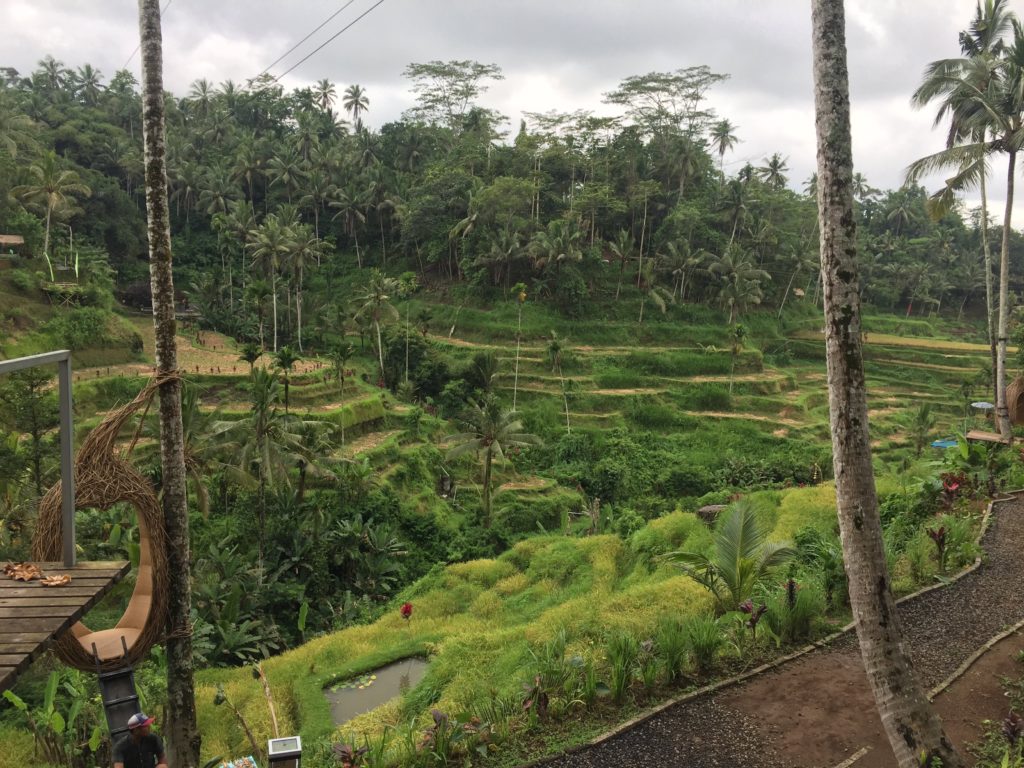
Even the beautiful rice terraces have become mini theme parks as well, with giant swings, ziplines, and Instagram photo opportunities. When we asked whether we were at a real, functioning rice terrace, a local told us that all the tourists at the rice terraces were actually good, because it scares away the birds that eat the rice. I am still not sure if I believe it or not.
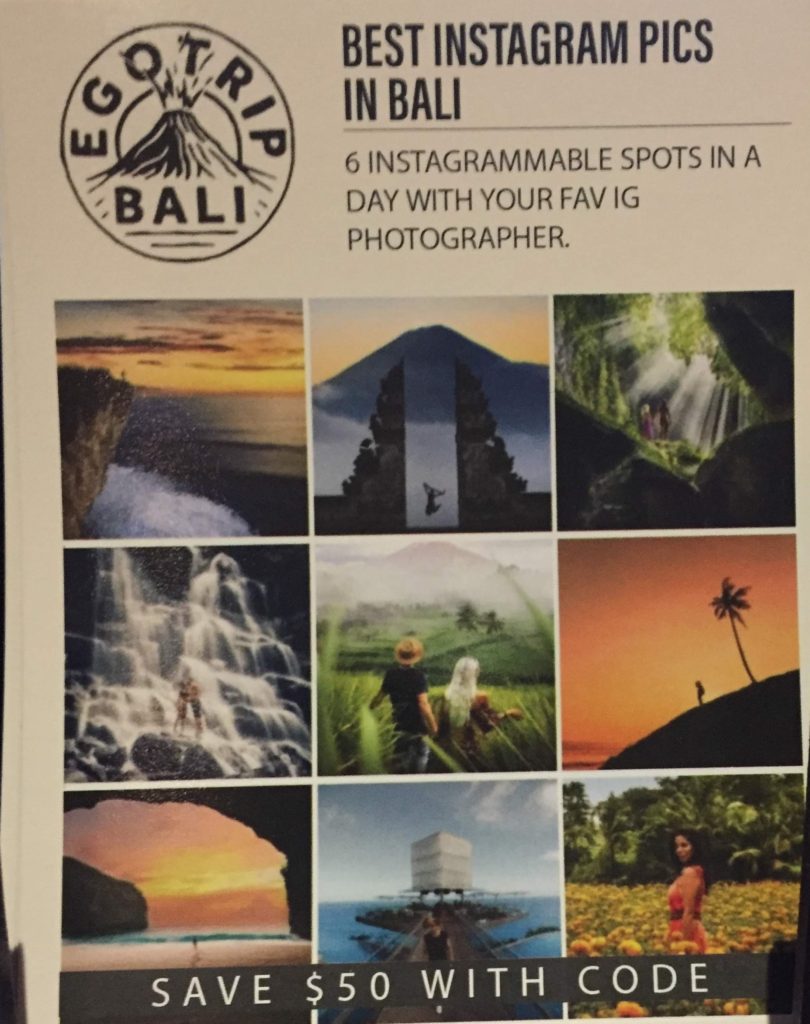
Finally, the entire island has become a sought after place for people to populate their instagram with great photos. There are actually “Instagram day tours” that take tourists to as many “Instagrammable” places as possible in a day and help them create perfect (yet sometimes inauthentic) shots using mirrors and other tricks. I suppose there is little time on this tour to actually enjoy the sights while visiting them. Perhaps this is done afterwards while editing the photos!
Traffic is ridiculous
When I say that traffic is ridiculous, it feels like an understatement! Unless you are driving in non peak times such as 2am (as we did to Mt. Batur), it takes a long time to get anywhere. To put it in perspective, at one point, we changed hotels in Ubud. Our new hotel was 5km away. Without traffic, it should take about 10 minutes by car. It took us just over an hour! If we were not carrying our luggage, we would have walked.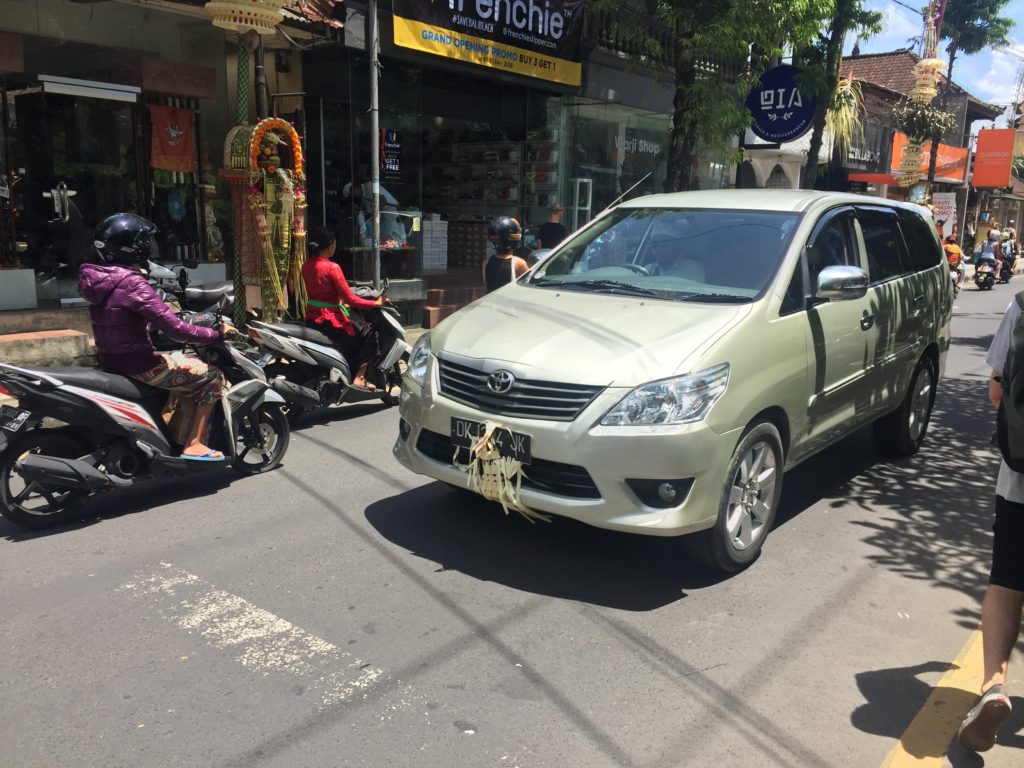
The luwak coffee craze
Kopi luwak has gained notoriety as the world’s most expensive coffee. It is produced from beans which have been collected from the feces of an Indonesian cat-like animal called a luwak (civet). Supposedly, these animals feast on only the ripest and best coffee cherry beans.
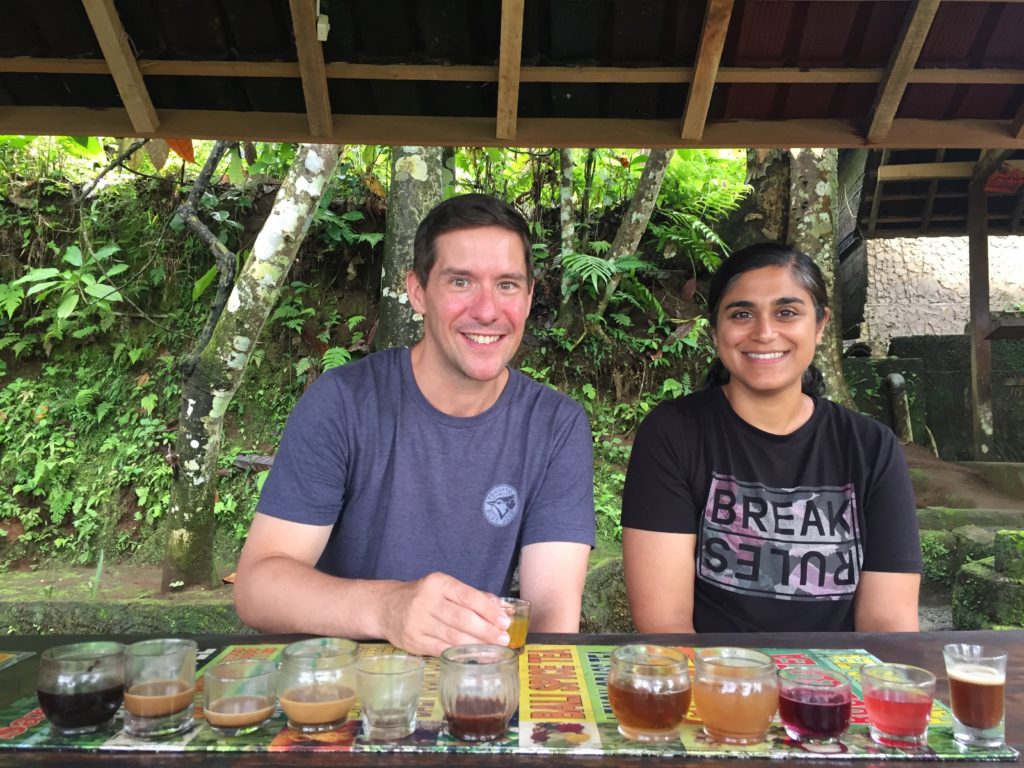
They excrete the beans without digesting them, which are then collected and cleaned. This process creates the so-called best coffee in the world. However, most of the kopi luwak for sale is fake and the treatment of the animals is irresponsible. See our post “Why You Should Not Drink Luwak Coffee” for more information.
The Confusing
The abundance of tattoo shops
Bali is an island with a beating sun, and a surplus of beaches and swimming pools. It also has a significant number of tattoo shops. It is virtually impossible to walk a single block without coming across multiple shops in which to get inked. Here is what is confusing to me. Fresh tattoos are literally wounds that need to be healed. It is recommended to avoid sun exposure and swimming in pools or the ocean until it is healed.
Why do so many tourists get tattoos in Bali then? Literally, 99% of tattoos purchased in Bali are by tourists. Are they all getting the tattoo a day or two before they depart? Are the prices so good that they can not avoid the temptation? Either way, it remains a mystery to me.
Tourism brings a lot of money to Bali and a lot of joy to the tourists that visit. However, the environmental and cultural impact tourism has made on Bali makes it hard for us to promote it as a desirable destination to visit. With that said, we did enjoy our time on the island and definitely made some great memories. We just do not expect to return any time soon.
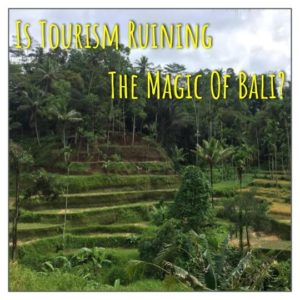
Disclosure: Please note that this site may contain affiliate links to products. We may receive a small commission for purchases made through these links at no extra cost to you.


What an interesting post! The issue of overtourism has been something on my mind quite often lately, and it seems Bali might be hit with that problem big time. Are there any ways you think visitors to the country can try and overcome the overtourism problem (aside from ensuring that they’re only using legit services while in the area)?
Thanks for the kind words. I’m not sure if there is a way to overcome the problem. As long as people are willing to spend their dollars there, things are going to stay status quo. Money talks right? Tourists can lessen their negative impact by being responsible with water and plastic usage and taking care of their garbage.
Is tourism ruining the magic of Bali? The fact is, Bali was ruined long ago. I have visited multiple times from early 1990’s to 2009 but it’s unlikely I’ll ever visit again. Bali has lost the magic it once had. Even when I last visited 10 years ago it was a sad pastiche of what it once was.
Thanks for reading and for your comment Marula. Sadly, I have to agree that it is devastating what tourism has done to such a beautiful place.